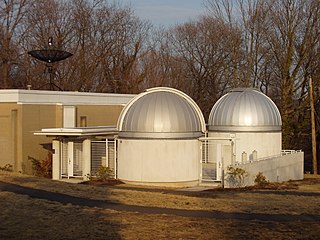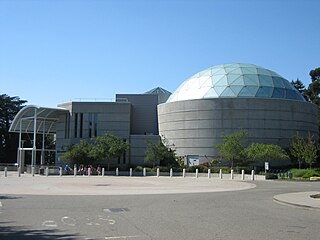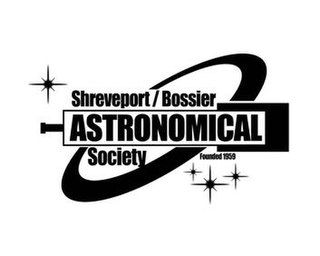
The Adler Planetarium is a public museum dedicated to the study of astronomy and astrophysics. It was founded in 1930 by Chicago business leader Max Adler. It is located on the northeast tip of Northerly Island at the shore of Lake Michigan in Chicago, Illinois. The Adler was the first planetarium in the United States and is part of Chicago's Museum Campus, which includes the John G. Shedd Aquarium and The Field Museum. The Adler's mission is to inspire exploration and understanding of the universe.

Boyden Observatory is an astronomical research observatory and science education centre located in Maselspoort, 20 kilometres (12 mi) north-east of the city of Bloemfontein in Free State, South Africa. The observatory is managed by the Physics Department of the University of the Free State (UFS). The Friends of Boyden assist the observatory as a public support group, organising open evenings and protecting its public interest. Boyden also makes use of members of ASSA Bloemfontein Centre, the amateur astronomy club of the city, for presenters and telescope assistants.

The David Dunlap Observatory (DDO) is an astronomical observatory site just north of Toronto, in Richmond Hill, Ontario. Formerly owned and operated by the University of Toronto, from its establishment in 1935 until 2008; the observatory is now owned and operated by the City of Richmond Hill providing a combination of heritage preservation, unique recreation opportunities and a celebration of the astronomical history of the site. Its primary instrument is a 74-inch (1.88 m) reflector telescope, at one time the second-largest telescope in the world, and still the largest in Canada. Several other telescopes are also located at the site, which formerly also included a small radio telescope. The scientific legacy of the David Dunlap Observatory continues in the Dunlap Institute for Astronomy & Astrophysics, a research institute at the University of Toronto established in 2008.

Armagh Observatory is an astronomical research institute in Armagh, Northern Ireland. Around 25 astronomers are based at the observatory, studying stellar astrophysics, the Sun, Solar System astronomy and Earth's climate.

Space Place at Carter Observatory is housed in a historic astronomical observatory located at the top of the Wellington Botanic Garden in Wellington, New Zealand.
The Amateur Astronomers Association of Pittsburgh (AAAP) was founded on June 9, 1929, by Chester B. Roe and Leo J. Scanlon. Since then, it has grown to over 500 members and operates two observatories in the Pittsburgh region: the Nicholas E. Wagman Observatory and the Mingo Creek Park Observatory. The club also sponsors many star parties that are open to members of the public throughout the year.

Rainwater Observatory and Planetarium is an educational astronomical observatory and Planetarium run as an educational ministry of French Camp Academy. It is located near French Camp, Mississippi, United States. It is the largest observatory in Mississippi with 16+ telescopes, with the largest instruments including a 32-inch Dobsonian telescope and 14-inch Celestron catadioptric telescope. Rainwater is currently awaiting delivery of the Sollee Telescope, a 25-inch research-grade telescope. When installed in the two-story observatory building already constructed in the observatory complex, the Sollee Telescope will be suitable for serious astronomical studies, in the last remaining "dark spot" in Mississippi on the U.S. Dark Skies photograph.

UNA Observatory is an astronomical observatory owned and operated by the University of North Alabama. It is located in Florence, Alabama (USA). It has 2 telescopes, a Celestron 0.35 m Schmidt–Cassegrain telescope. The UNA Planetarium is a 65-seat planetarium with a Spitz A3P projector and East Cost Control Systems controller.

Fox Observatory is an astronomical observatory owned and operated by South Florida Amateur Astronomers Association. It is located in Sunrise, Florida (US).

The Yale University Observatory, also known as the Leitner Family Observatory and Planetarium, is an astronomical observatory owned and operated by Yale University, and maintained for student use. It is located in Farnham Memorial Gardens near the corner of Edwards and Prospect Streets, New Haven, Connecticut.

Chabot Space and Science Center, located in Oakland, California, is a center for science learning featuring interactive exhibits, planetariums, a large screen theater, hands-on activities and three powerful telescopes.

Darling's Observatory, built from 1916–17, was a private observatory built by Mr. J. H. Darling in Duluth, Minnesota, United States. The site of the observatory was on West 3rd St. between 9th and 10th avenues in Duluth, MN, and sat about 325 feet above Lake Superior. Plans for the building were drawn by Richard E. Schmidt of Garden & Martin of Chicago. The blueprints for the steel dome were prepared by Mr. Darling himself after inspecting domes from various other observatories. The wooden building had a stucco exterior finish.

The Archenhold Observatory, named in honor of Friedrich Simon Archenhold, is an observatory in Berlin-Treptow. It houses the Großer Refraktor, which is the longest pointable telescope in the world. It is also called the Himmelskanone.
The Escambia Amateur Astronomers Association (EAAA) is an amateur astronomy club in Northwest Florida.

The Mills Observatory in Dundee, Scotland, is the first purpose-built public astronomical observatory in the UK. Built in 1935, the observatory is classically styled in sandstone and has a distinctive 7 m dome, which houses a Victorian refracting telescope, a small planetarium, and display areas. The dome is one of two made from papier-mâché to survive in the UK, the other being at the Godlee Observatory.

The Dearborn Observatory is an astronomical observatory located on the Evanston campus of Northwestern University. The observatory was originally constructed in 1888, through an agreement between the university and the Chicago Astronomical Society. In the summer of 1939, Dearborn Observatory had to be moved to make way for the construction of the Technological Institute.
The Carinthian Astronomical Association Is the second great astronomical association in Austria. The CAA owns two observatories and one planetarium. One observatory is located near Klagenfurt, on the Kreuzbergl, the other on the Gerlitze, near Villach. The planetarium is situated a Klagenfurt near Minimundus.
The Von Braun Astronomical Society is a society of amateur and professional astronomers dedicated to education and public outreach on behalf of astronomy based in Huntsville, Alabama, United States.

The Orchard Hill Observatory is an astronomical observatory located at the highest point on the University of Massachusetts Amherst campus. Constructed in 1965, the observatory is a red brick building with a 16-inch Cassegrain reflector optical telescope. It is used for several community events and is regularly open for public viewing on Thursday nights. Originally the observatory was home to a 20” telescope, given to the department by an avid amateur who lived in central Massachusetts. It was a 1/10 scale model (loosely) of a larger 200” scope. Eventually, a crack was spotted during one of the re-aluminizings of the 20” mirror and the scope was no more. In the meantime, the department had been granted money associated with its move from Hasbrouck to the Grad Research Tower to buy a small telescope and put in on top of the GRC. The GRC had a small "isolation" pad built on its roof, which was supposed to be a mount for the scope, which could be accessed via a small open elevator. However, the GRC had terrible noise and gross vibration problems. The isolation pad never worked and there were too many safety concerns about using the roof of the building for observing. A 16" telescope was later bought from Competition Associates. That scope arrived in 1976 but because of the problems with using the top of the GRC, the scope was never mounted there. In fact, it sat in the basement of Hasbrouck for perhaps 10 years, becoming known as the "Subterranean Telescope.” This situation finally led to the 20" being disassembled and the 16" scope being moved to Orchard Hill and installed in the dome there. The 16" was a major improvement in usability. As to what happened to the 20", the mirror may have been stored in the Astronomy Research Facility but the drive was most likely not kept.

The Shreveport-Bossier Astronomical Society, Inc. is a 501(c)(3) tax-exempt organization and one of the oldest continuously meeting astronomy clubs in the United States of America. Originally named the Shreveport Junior Astronomical Society, it was founded in 1959 by a group of high school students led by a fellow student, Sara Worley. Fifteen people attended an organizational meeting to establish a club on October 10, 1959. Officers were elected at this meeting and Sara Worley became the first president of the Shreveport Junior Astronomical Society. A second organizational meeting took place on October 17, 1959, where a constitution and additional society-related details were established. The constitution was approved, signed, and ratified at a third meeting on October 24, 1959, although there was no State of Louisiana charter. The first public meeting of the club was held on November 14, 1959 at Centenary College of Louisiana. Two goals were announced: build an observatory and procure a planetarium for the Shreveport area. Within five years, these two goals were accomplished through local participation and fundraising.













